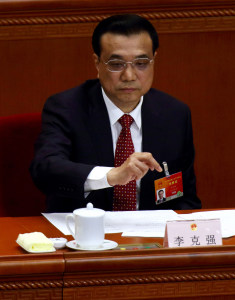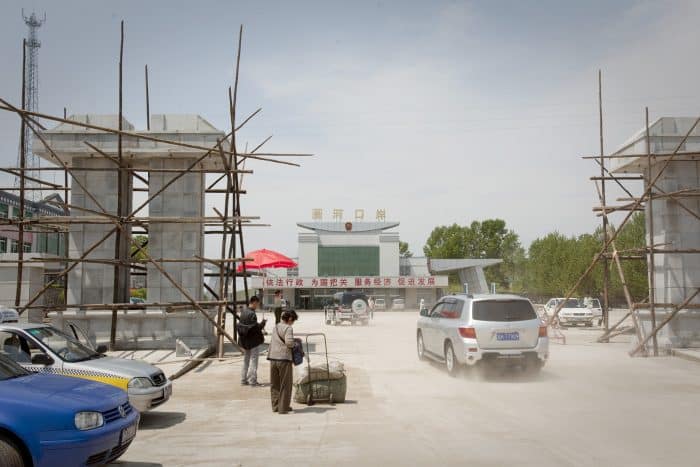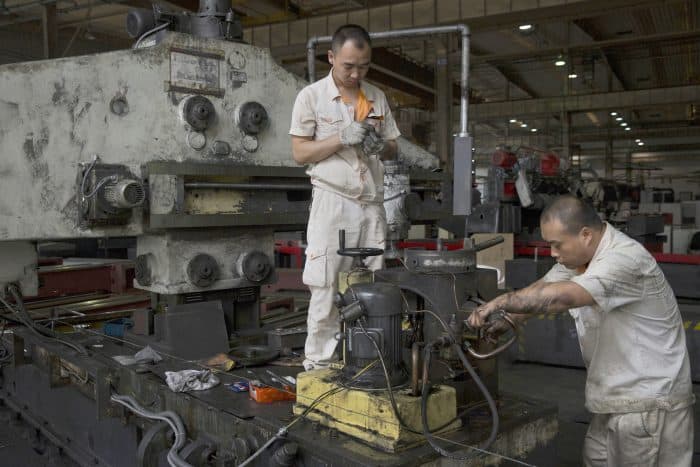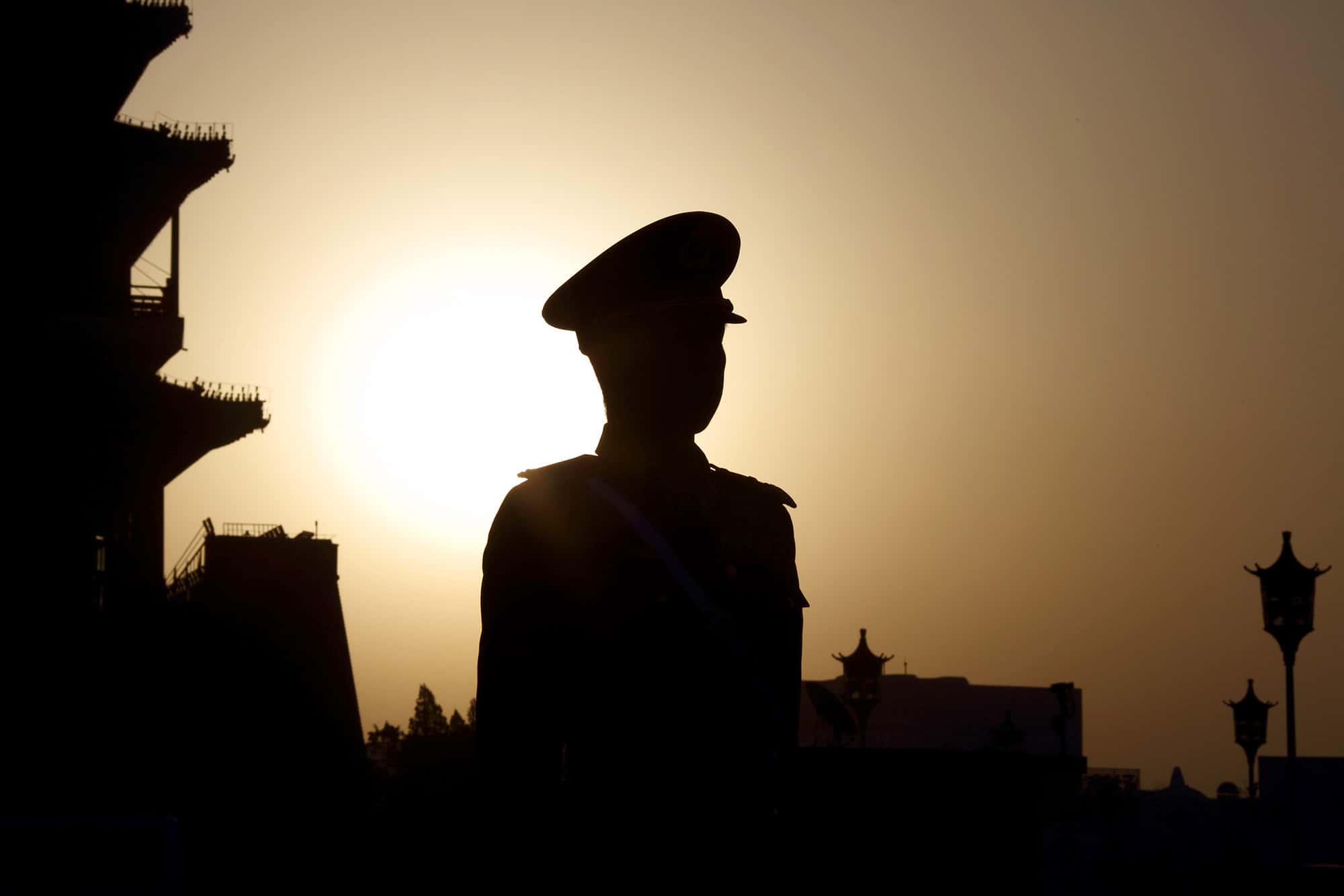“When the wind of change blows, some build walls while others build windmills.” In late January, Chinese Premier Li Keqiang shared that proverb with global leaders in a keynote speech at the World Economic Forum in Davos, Switzerland.
China was in windmill mode, committed to structural reform “no matter how difficult.” The “new normal” called for more moderate, consumer-led growth. The financial system would be modernized and the country aimed to shift away from its excessive reliance on debt-fueled, infrastructure-powered growth that had led to industrial overcapacity and an epic credit bubble.
Better still, the makeover would be pulled off smoothly: “What I want to emphasize is that regional or systemic financial crisis will not happen in China, and the Chinese economy will not head for a hard landing,” Li said. Roughly seven months later, China finds itself at the epicenter of a global stock market rout that has vaporized $8 trillion in wealth.
Nobody is quite sure whether the world’s No. 2 economy is really growing at 7 percent, as official figures suggest, or 6 percent — or actually careening toward a hard landing.
Authorities are now quietly rolling out China’s biggest stimulus effort since the 2008 global financial crisis in an effort to put a floor under a weakening economy. Interest rates have been cut to record lows, banks are being encouraged to lend and new infrastructure spending is being rolled out.
The confidence Li exuded in January has given way to policy zig-zags and mixed messages about the commitment of President Xi Jinping’s government to reform. The tale of how Chinese leaders have dealt with decelerating growth, debt pressures, a stock market crash and its sudden currency shift is instructive for investors, executives and policymakers puzzled by the trajectory of this all-important, $10 trillion economy.
It didn’t take long for economic trouble to surface. In April, Li met a group of local government officials in Changchun, the capital city of Jilin province that shares a border with North Korea.
Li, 60, wanted to take the pulse of the region’s economy — and the news wasn’t encouraging. Known as China’s rust belt due to its state-dominated heavy industry and manufacturing sector, Jilin was among the worst performing economies in the country. It grew at 5.8 percent during the year’s first three months compared with 7 percent for the national economy. Neighboring Heilongjiang province grew by 4.8 percent and Liaoning by 1.9 percent.
Li’s response
But if the regional governments had hoped for a fiscal rescue mission from Beijing, they were set for disappointment. When one official said the wider region needed help from the central government, Li’s response flashed anger. “If you rely on the central government for everything, why on earth do we need local officials like you,” Li said, according to one of those present at the meeting who asked not to be identified.

In a personal aside to what had become a tense meeting, Li noted that he once worked in Liaoning and considered himself a half “north east native,” and that he was “heartbroken” by the region’s economic performance.
The pain being felt in places like Jilin was all part of a plan to rebalance China’s economy away from debt-fueled investment and exports to one spurred by consumers, services and innovation. Officials knew the economy would need some help and hoped interest-rate cuts and targeted public spending would do the trick rather than a massive stimulus program like the one rolled out in response to the 2008 crisis.
At the same time, Chinese leaders had launched a multi- pronged strategy to upgrade the country’s sprawling financial system. The agenda included an ambitious attempt to rein in the nation’s growing debt pile by curbing local governments from off-balance sheet borrowing.
Bigger, status symbol plans were underway too. The People’s Bank of China Governor Zhou Xiaochuan launched a push for the yuan to win reserve currency status at the International Monetary Fund. China’s stocks were being championed for inclusion in the MSCI Inc.’s benchmark indexes as part of a master plan to lure in foreign money and keep the economy growing.
By the end of the first quarter, deeper cracks started to appear. A clampdown on local authority borrowing led to infrastructure bottlenecks that threatened the government’s growth target of about 7 percent.
With cities and provinces squeezed for cash, the central government backtracked, orchestrating a two trillion yuan debt swap — that could be increased — to help borrowers convert high-cost existing notes maturing this year into low-yielding municipal bonds. Growth had become a priority over deleveraging.

Debt bomb
Government, corporate, and household borrowing totaled $28 trillion as of mid-2014, or about 282 percent of the country’s gross domestic product, according to the McKinsey Global Institute.
Then there was the stock market. As part of a plan to boost animal spirits and give companies an alternative source of financing, the government fanned a surge in stock prices by encouraging retail investors to buy shares, fueling a huge run up in leverage to fund the trading. In a major reform, a new trading link had already been established between the Shanghai and Hong Kong exchanges late last year, allowing foreign investors greater access.
In early April, China’s state news agency Xinhua published four articles linking a strong stock market to a strong economy. The overseas edition of the People’s Daily followed up, pushing the bull market as key for growth. By mid-June, Chinese stocks had gained 150 percent from a year earlier, putting a gloss on an economy that was showing few signs of traction even after the People’s Bank of China had lowered interest rates and cut the reserve ratio requirements for banks.
Along the way, margin debt surged to a record $358 billion as the number of investors passed 90 million — more than the Communist Party’s total membership — with individuals opening more than 1 million accounts a week at the peak of the rally. Concerned by the ballooning leverage, the regulator sought to curb margin finance.
Then it all came crashing down. After peaking in mid-June, the rout has wiped more than $5 trillion off the value of shares on the Shanghai and Shenzhen exchanges and triggered unprecedented intervention by the government. Officials banned large shareholders from selling stakes, ordered state-run institutions to buy stocks, allowed more than half of listed companies to halt trading, armed a state agency with $483 billion and set up a police investigation into short selling.
“The government had actively encouraged ordinary people to get involved in the stock market over the past year, so it was extremely embarrassing for the crash to come,” said Arthur Kroeber, Beijing-based managing director at GaveKal Dragonomics, an independent global economic research firm.
Behind the scenes, the regulatory response was chaotic. On the morning of July 4, executives from China’s 21 biggest brokerages convened in the board room of Focus Plaza on Beijing’s Financial Street.
The meeting, at the behest of the China Securities Regulatory Commission Chairman Xiao Gang, did little to calm nerves. An agreement was reached that the brokerages would invest the equivalent of 15 percent of their net assets as of the end of June, or no less than 120 billion yuan ($18.7 billion) in total, in blue-chip exchange traded funds.
The brokerages felt they were taking the blame for a government made crisis and had little confidence in Xiao’s ability to handle the fallout, according to interviews with those briefed about the meeting.
In particular, the executives derided the lack of communication from the regulator and felt he was out of touch. In the 90 minute long meeting, Xiao delivered orders and made clear that brokers had to sign the agreement. Some executives asked Xiao for more time to work out a solution, but he refused, the people said, declining to be named because the meeting was held in private.
But that wasn’t the public message. A statement released after the meeting by The Securities Association of China said the brokers “have confidence on the development of the country’s capital market, and all agreed to resolutely maintain the stable development of the stock market.”
At the same time, details were also emerging of a recapitalization of China’s so-called policy banks to fund infrastructure around the country. The central bank put $48 billion into China Development Bank Corp., people familiar with the matter said. Export-Import Bank of China got $45 billion.
While policymakers hoped they had turned a corner after the stock market chaos, the economy was limping into the second half of the year. After second quarter GDP came in right on the government’s 7 percent target, private sector economists questioned the data’s veracity. The economy expanded 6.3 percent in the first half, according to the median estimate of 11 economists surveyed this month. With the support plank of a soaring stock market now gone, growth was likely to get worse.

Yuan surprise
In a sure sign of growing concern, current and retired Communist Party leaders such as Xi, Li, and former President Jiang Zemin this month zeroed in on the economy’s health during their annual conclave at the resort area of Beidaihe, more than 200 kilometers (124 miles) from the capital, a person familiar with the matter said.
Meanwhile, China continued its push for the yuan to win entry into the IMF’s reserve currency basket, known as Special Drawing Rights, alongside the dollar, euro, pound and yen. To get in, China would need to make market reforms like freeing up its tightly controlled exchange rate, something which U.S. lawmakers and others had long called for.
A report by the IMF early this month laid out that China had more work to do. On the weekend after that IMF report, China released trade numbers that showed exports slumped 8.3 percent in July from a year earlier. The weaker performance sent a jolt through analysts.
Whether the weak trade numbers were a trigger or not, what followed was a momentous event for global markets. China on Aug. 11 shifted to a more flexible exchange rate and said it would allow the market a bigger role in setting the yuan’s value.
The surprise move triggered the currency’s biggest loss in two decades and sent stock markets from Taiwan to Germany into a tailspin. Debate raged as to whether the move was a market reform or bid to boost exports, or both.
The confusion among China watchers mirrored a shifting dynamic behind the scenes. Since taking over as head of the Communist Party in November 2012, Xi has amassed greater control of economic policy making by taking over two “leading groups,” one on reforms and the other on financial and economic affairs normally steered by Premiers. Li, with a Ph.D in economics, has been overshadowed by Xi, who studied chemical engineering.
“President Xi Jinping is more influential nowadays compared with previous generations of leaders,” said Tao Dong, chief regional economist for Asia excluding Japan at Credit Suisse Group in Hong Kong. “He makes the big calls.”
Despite the market melodrama, Xi’s government can point to some success. Consumer spending and services are holding up. The problem is, they are not doing enough to fill the gap left by slumping investment.
The leadership has been rolling out the fiscal stimulus as judiciously as possible, in an effort to avoid the mistakes made by their predecessors President Hu Jintao and Wen Jiabao.
In a sign of the balancing act authorities are trying to perform, officials have halted intervention in the stock market as massive selling pressure ramps up the cost of supporting stocks, according to people familiar with situation. Instead, the PBOC on Tuesday again cut interest rates, suggesting policy makers were turning back to traditional levers to stoke confidence. The central bank has also intervened in the foreign exchange market to prop up the yuan.
Back in the North East, Chen Weigen, the deputy director of Jilin People’s Congress standing committee, told reporters this month that the province is “going all out” to achieve its GDP target after Li’s visit by ramping up spending on underground pipes and water treatment.
As Li’s meeting with the North Eastern officials wrapped up in April, he promised to check back on their progress before the year end. Whether the province, and the nation, can meet Li’s ambitions will determine how history judges the “new normal” and its architects.
© 2015, Bloomberg News







